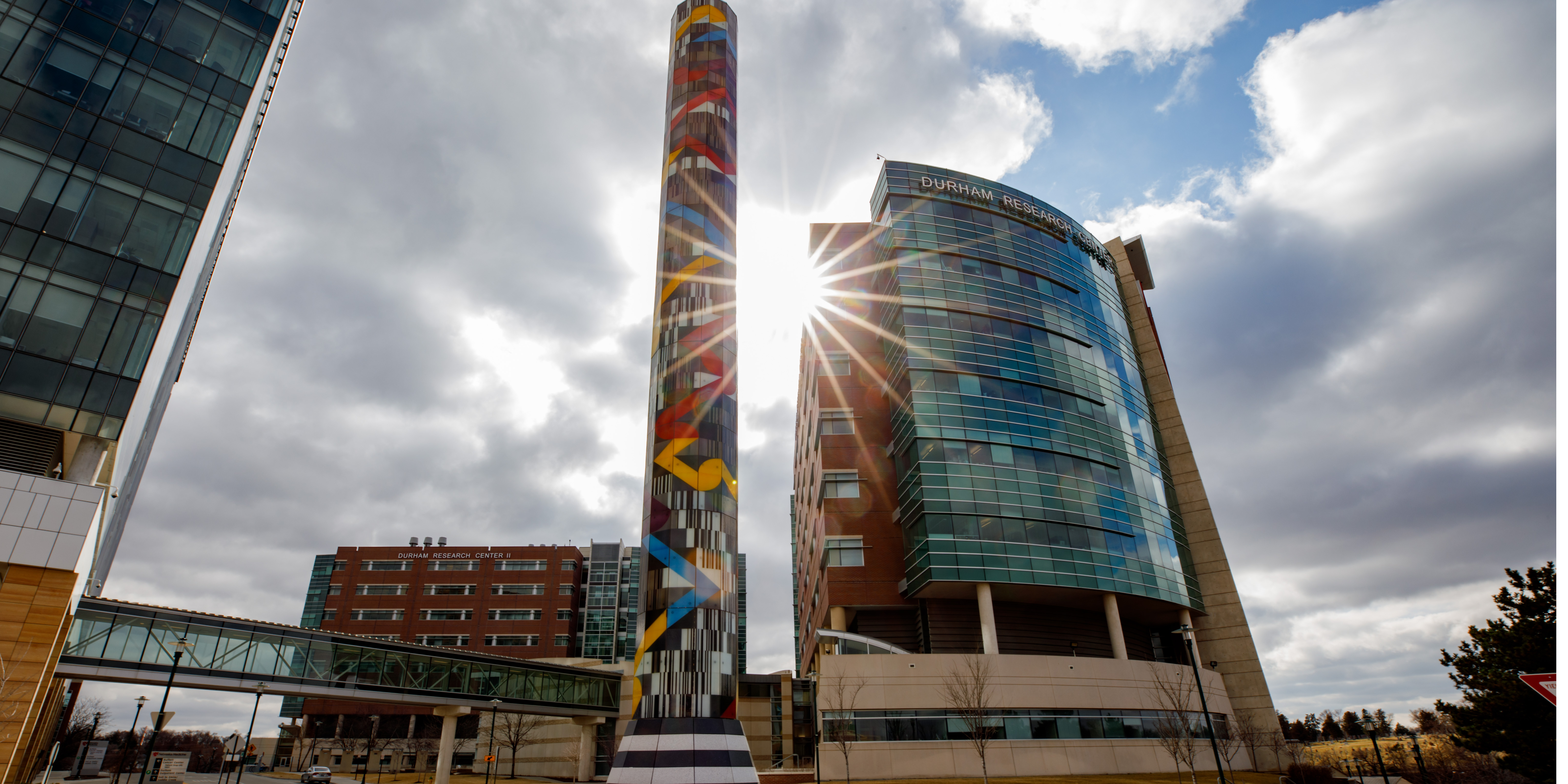
Projects
Projects
Current Projects:
1. ARPA-H BREATHE: Strategic Control of bioAerosols in Learning Environments (SCALE)
- The world’s first continuous, comprehensive and fully-verifiable risk sensing and response system that enables adaptive airborne infection resilient buildings.
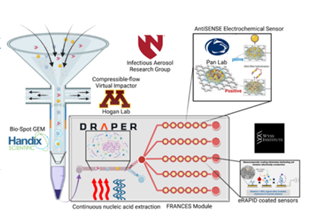
2. Independent Verification and Validation for Biological Agents for the DARPA Personalized Protective Biosystem (PPB) - Defense Advanced Research Projects Agency
- The goal of the PPB program is to develop an integrated ensemble that simultaneously eliminates protective equipment needs while increasing protection for the individual against all Chemical and Biological (CB) threats. The capability to provide unburdened CB protection will reduce the logistical burden on the warfighter, provide operational flexibility, and sustain military operations in remote theaters, which may include diverse, unpredictable, and unknown threats. The current successful PPB technologies provide protection these threats at the tissue barrier with the use of engineered commensal organisms. PPB will improve mission execution by solving the current “state of the art” (SOA) protective equipment limitations including threat-specific vulnerabilities, thermal/logistical burdens, exposure risks during decontamination or equipment removal in the field, and on-demand accessibility during unexpected threat situations. Solutions developed by the PPB program can be used to protect the warfighter with minimal to zero logistical footprint, while engaging in an unanticipated multiplexed threat environment, and provide humanitarian assistance and disaster relief (HADR) during pathogenic outbreaks in austere environments without logistical support.
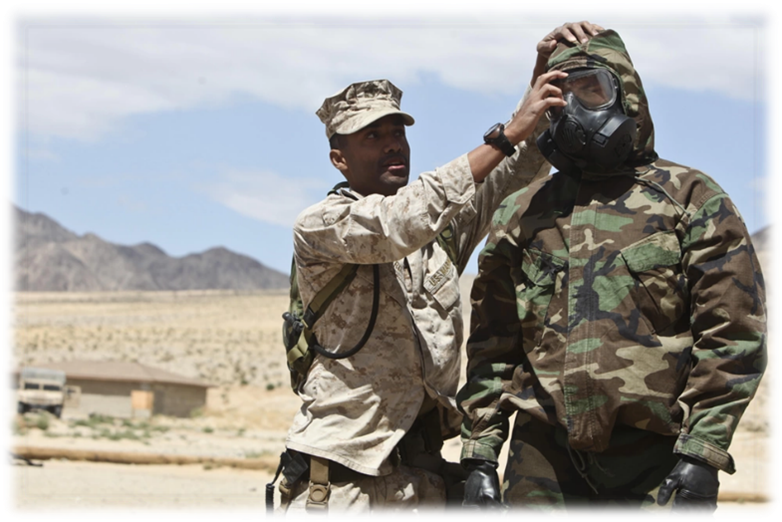
3. Blueprint Biosecurity: EXposure of Human Aerosols to far-UVC Light for pathogen Elimination (EXHALE)
- This study will determine the impact of far-UVC light on human-generated aerosols containing influenza and SARS-CoV-2
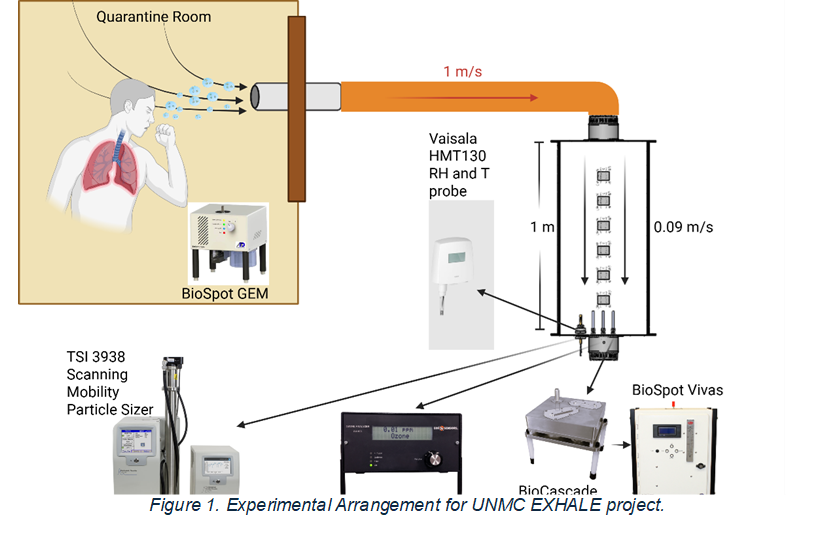
Selected Past Projects
-
Polarized Light Scattering for Biodetection - Defense Threat Reduction Agency
-
The Army Research Labs, National Strategic Research Institute and University of Nebraska Medical Center team has developed an advanced method that can measure the phase function of circular intensity differential scattering (CIDS), i.e. the normalized Mueller matrix element -S14/S11, from individual single flowing through aerosol particles. This technique has been demonstrated to discriminate biological from non-biological aerosol particles based on the helical molecules, such as nucleic acids, that are unique to biological systems. In this effort, we will further develop and characterize CIDS technology and develop and demonstrate a CIDS-type biodetection device that could be adapted for use as an early-warning bioaerosol detector.
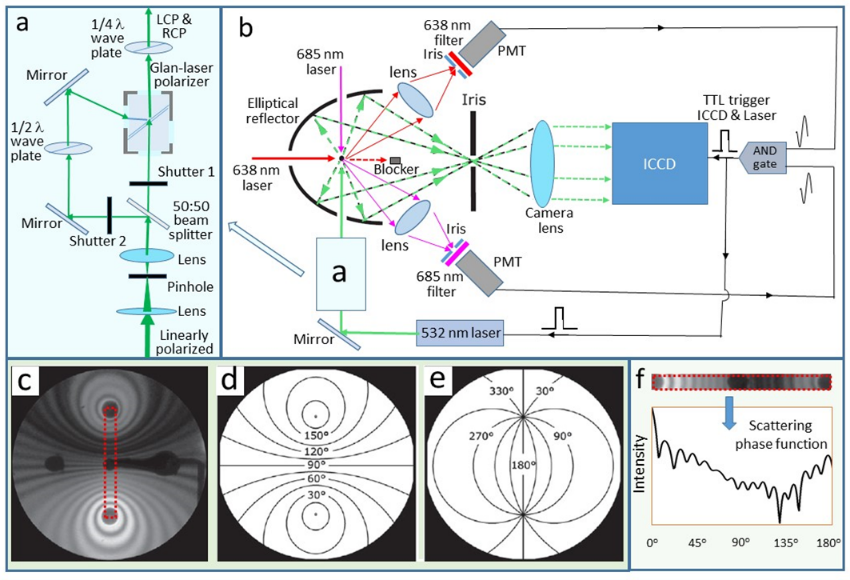
-
-
Intrinsic Factors Impacting Viral Aerosol Stability in the Environment- Defense Threat Reduction Agency
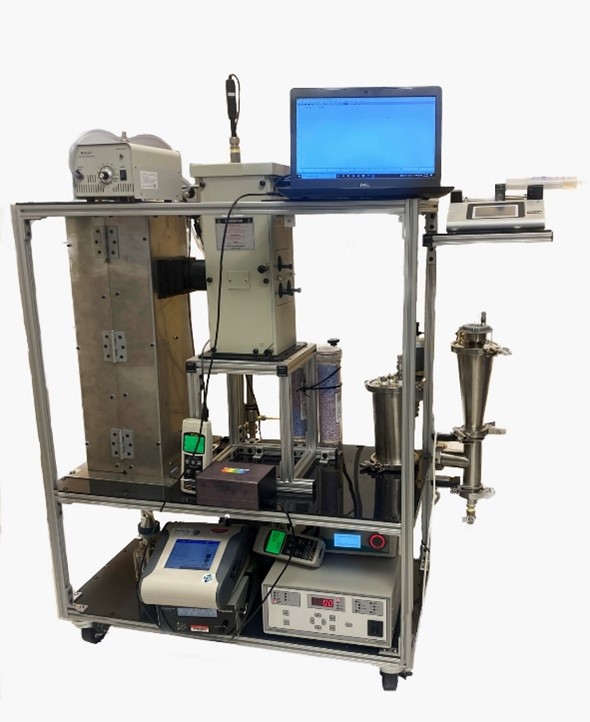
- Plausibility of Laboratory Acquired Infectious Diseases - Department of Homeland Security
-
The Plausibility of Laboratory-Acquired Infectious Diseases (PLAID) project explores potential inadvertent exposure to aerosolized biological hazards within laboratory settings. The generation of aerosols during various standard laboratory procedures and common accidents is considered a significant source of laboratory-acquired infections (LAIs). Still, the quantity and properties of infectious aerosols produced are often not quantified. To address this, we use the Fine Aerosol Biohazard Risk Isolation Chamber (FABRIC), an apparatus designed by the Infectious Aerosol Research Group, featuring a small-volume chamber with upwelling flow and multiple sampling ports that enable the simulation of standard laboratory procedures and common accidents within a contained environment. Equipped with sampling ports, we can simultaneously measure aerosol concentration and size distribution through tools such as a Next Generation Impactor, an Optical Particle Sizer, and an 80 mm gelatin filter from the chamber. The data from these measurements allow for an in-depth understanding of the quantity and size of aerosol particles generated during each simulated procedure, offering insights into potential risks and strategies for enhanced biosafety. Our preliminary PLAID studies involving a fluorescent tracer have confirmed that standard laboratory procedures and common accidents can generate aerosols. Proposed future PLAID work aims to conduct experiments while handling bacterial and viral suspensions to determine the viability of aerosols generated from standard laboratory procedures and common accidents.

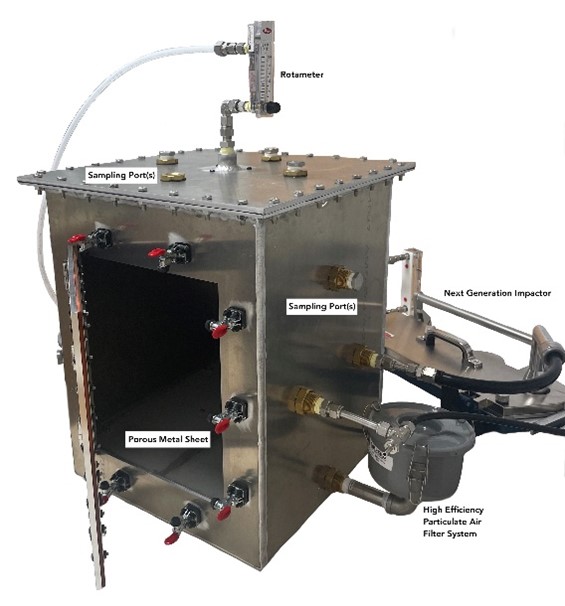
5. Study of the multi-zone transmission of bioaerosols in an environmentally controlled chamber with human participants diagnosed with Influenza/RSV/COVID-19 - Balvi gift to the NU Foundation
- In this effort we aim to quantify the transport of bioaerosols from one air space to another connected by typical HVAC infrastructure to understand the fundamental potential and likelihood of disease transmission across multiple HVAC air zones, as well as determine the effectiveness HVAC filtration and mitigations to minimize the survival of airborne pathogens between air zones. This project will use multiple methods to provide the most quantitative data possible. DNA tracer particles will allow us to quantify the total fraction of particles that move between the zones, and a surrogate virus (such as MS2 or Phi6) will allow us to understand the fraction of viable virus that moves between the spaces, or remains viable within a zone. This can be done in a variety of environmental conditions (air exchange, humidity, presence/absence of UV-C) and HVAC duct configurations (tortured path). Configurations that pose the combination of highest risk (as measured) and where interventions might be the most impactful, as well as select actual as built environments will be evaluated using participants diagnosed with Influenza, RSV or COVID-19.
6. Disease Transmission
- Environmental Sampling for Pathogens to Environmental and Aerosol Sampling to Support Understanding of COVID-19 Transmission, Stability and Inform Personal Protective
7. Equipment Selection and Use - Department of Homeland Security
- Omaha Public Schools PROactive TEsting for Community Transmission of SARS-CoV-2 (OPS PROTECTS)
- Exposure assessment of SARS-CoV-2 transmission in meat processing plants - Gift to the NU Foundation
8. Laboratory Aerosol Studies
9. Controlled Aerosol Assessments
- Royal Caribbean Controlled Bioaerosol Assessment - Royal Carribean
- Transportation Isolation System Evaluation - Air Mobility Command
- Portable Biocontainment Module to Portable Biocontainment Module Evaluation for the Air Force - Defense Threat Reduction Agency
- Aerosol Transport Study on Military and Civilian Airframes - Defense Advanced Research Projects Agency and TRANSCOM
10. Aerosol Sampling Development
- Development of an Aerosol Collection System for the Deep PurpleVTOL UAS
- Sampler Development for Atreyu
11. “Study of the multi-zone transmission of bioaerosols in an environmentally controlled chamber with human participants diagnosed with Influenza/RSV/COVID-19 - Balvi gift to the NU Foundation”
12. Intrinsic Factors Impacting Viral Aerosol Stability in the Environment- Defense Threat Reduction Agency
13. Polarized Light Scattering for Biodetection - Defense Threat Reduction Agency